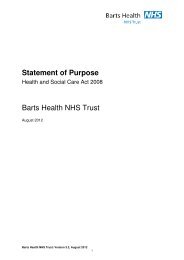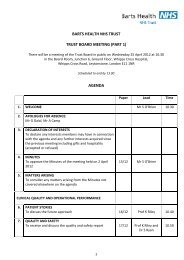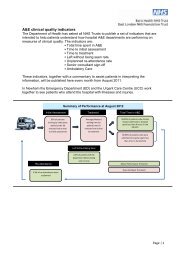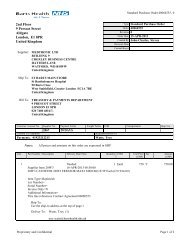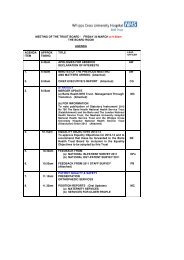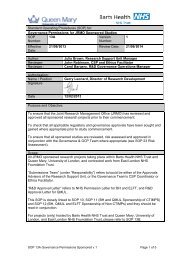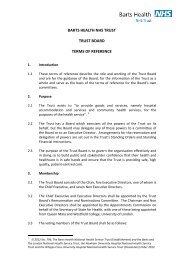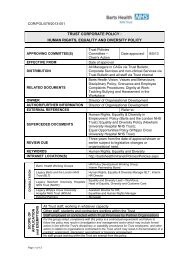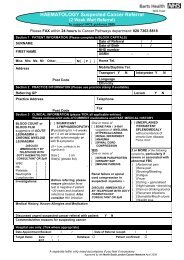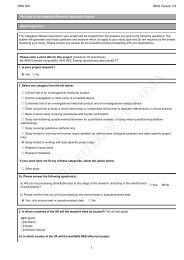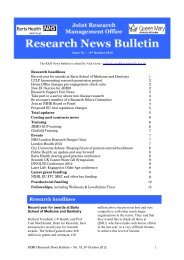Barts Health Equality and Human Rights Impact Assessment Report
Barts Health Equality and Human Rights Impact Assessment Report
Barts Health Equality and Human Rights Impact Assessment Report
- No tags were found...
Create successful ePaper yourself
Turn your PDF publications into a flip-book with our unique Google optimized e-Paper software.
<strong>Barts</strong> <strong>Health</strong> <strong>Equality</strong> <strong>and</strong> <strong>Human</strong> <strong>Rights</strong> <strong>Impact</strong> <strong>Assessment</strong> <strong>Report</strong>4. INEQUALITIES IN ACCESS TO HEALTHCAREThis section explores patient access to the services provided by individual Trusts.The data used was provided by individual Trusts <strong>and</strong> therefore varies in the protectedcharacteristics covered <strong>and</strong> the types of care covered. A comprehensive overview of all theinformation is provided in appendix H. Below we recount the main trends <strong>and</strong> findings.The section begins with an overview of access to GP surgeries, since this is importantcontextual information for the local area (given plans to reduce pressure on acute services inthe future). This data is taken from the GP Patient Survey, <strong>and</strong> therefore covers protectedcharacteristics including religion or belief <strong>and</strong> sexual orientation.Since the focus here is on access, <strong>and</strong> not just service user profiles, figures are often placedwithin the context of local community demographics. For convenience, these are taken to bethe prominent boroughs of Newham, Tower Hamlets, <strong>and</strong> Waltham Forest. For moredetailed information on actual catchment areas, see the Demography section (section III).4.1 Access to GP surgeriesData showing the number of people accessing GP surgeries is available from the GP PatientSurvey. A comprehensive overview of data is provided in appendix H. A summary isprovided below.Generally speaking, White British people are less likely to visit GP surgeries than the makeupof local communities might suggest. Within Newham, for example, White British peoplemake up 27.0% of people accessing GP services despite being 38.8% of the localpopulation. In Tower Hamlets, these figures are 44.4%, compared with 47.6%; <strong>and</strong> inWaltham Forest, 45.9%, compared with 53.4%.In contrast, certain groups are more likely to access GP services, given their profile in thelocal community. For example: Newham: people from an Indian background are 11.7% of people accessing GP servicesdespite being 9.8% of the population. For people from an African background the figuresare 11.3% <strong>and</strong> 9.7 respectively Tower Hamlets: people from a White Other background are 11.6% of people accessingGP services, despite being only 8.1% of the population. For people from a Bangladeshibackground, the figures are 20.1% <strong>and</strong> 20.6% respectively Waltham Forest: people from a White Other background are 12.5% of people accessingGP services, despite being only 6.8% of the population. For people from a Caribbeanbackground, the figures are 7.3% <strong>and</strong> 6.3% respectively151



